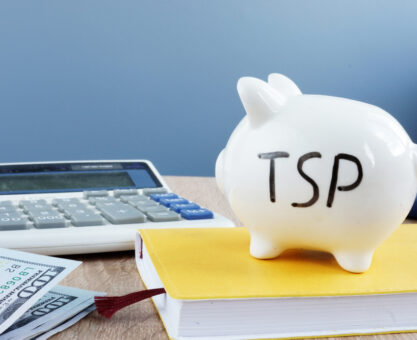If you’re only a few years away from your federal retirement, tax planning is more important than ever. Why? Because the Tax Cuts and Jobs Act (TCJA) signed into law by former President Trump will expire on December 31, 2025.
If Congress doesn’t extend the cuts, individual income tax rates will revert back to pre-TCJA levels. This includes a lower standard deduction that’s nearly half as much as it is right now. As the deadline approaches, pre-retirees need to understand that one of the top expenses in retirement is federal income taxes.
Calculate Potential Taxes On Your Retirement Income
Once you do the math you may be surprised to learn how much of your retirement income is subject to federal income taxes:
- 100% of distribution from your Traditional Thrift Savings Plan (TSP).
- As much as 90% to 98% of your FERS annuity (pension) income.
- Up to 85% of your Social Security benefit based on your provisional income.
- Plus any income from private-sector retirement plans that you or your spouse funded with tax-deferred contributions.
Also research your state laws — depending on where you live, some or all of your retirement income may be subject to state taxes.
“That’s not all — contrary to rumors, Roth TSP contributions also get the agency match.”
Start Making Post-Tax Contributions To The Roth TSP
Since contributions to your Roth TSP are made with after-tax earnings, you won’t pay taxes when you withdraw your contributions and any qualified earnings in retirement.* This means you can use income taxed at your current rate before the Trump tax cuts expire.
That’s not all — contrary to rumors, Roth TSP contributions also get the agency match. Since the matching portion is not taxed, it’s deposited into the tax-deferred balance of your traditional TSP to be taxed in retirement when you take distributions.
Consider Contributing To A Roth IRA
When you max out your TSP, a Roth IRA offers the ability to save even more for retirement while tax rates are still low. When you retire, it can provide another source of tax-free distributions. However, certain limits apply:
- The 2024 contribution limit for a Roth IRA is $7,000 plus an additional $1,000 if you’re age 50 or older.
- In 2024, you cannot contribute to a Roth IRA if you’re a single filer with an income over $161,000 or if you file jointly with a combined income over $240,000.
Also note, as of January 1, 2024, the Roth TSP and Roth IRA are no longer subject to Required Minimum Distributions (RMDs).
To learn more about tax planning, talk to an FRC® trained advisor.
*IRS requirements apply.


























